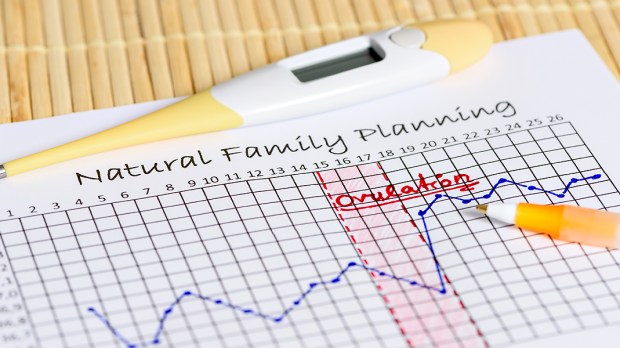Charting your cycle is a Natural Family Planning thing, right? So why would you teach it to your teenager, especially if she’s not even into high school yet or sexually active? What would be the point?
Well, what if I told you that learning to chart her cycle could actually save her life, lower her risk of going to jail, and improve her life in a myriad of other ways, too?
A study of over 100 women who had been hospitalized after attempting suicide confirmed that “The majority of suicide attempts by women occurred during their menstrual period when the estradiol and progesterone levels are at their lowest.” Another study found that “The first (or menstrual) and fourth (or premenstrual) week of the menstrual cycle may be associated with many suicide attempts in women.” Forensic researchers at the All India Institute of Medical Sciences came to the same conclusion, saying “we have observed menstrual cycle having a positive association with suicidal behavior.”
PMS is no joke. In women prone to depression, or suffering from other mental illnesses, the hormonal fluctuations that come with a woman’s cycle can put her at serious risk.
So how does charting help?

Read more:
Sex is depressing for teens
Leslie Carol Botha, horrified by the FBI’s report that in 2013, over 250,000 girls–not women, but girls–had been jailed, wanted to know why the number was so high. Botha herself worked with at-risk girls, and found that “over 90% of the girls I have worked with (ages 13 to 17) ended up in jail and had their periods. They acted out while they were premenstrual.”
Botha attributes this staggering percentage to “ the lack of relevant education about body literacy and hormone effects on behaviors.”
So she decided to change that and began teaching the girls in her care to chart their cycles, and take note of their monthly behavioral changes. She saw results almost immediately.
Writer Anna Migeon describes how “Ms. Botha engaged the girls in a comprehensive menstrual health education program that included tracking their cycles as an art project, complete with colorful markers and stickers. ‘The data I walked away with was mind boggling … No matter the girl, her background the type of abuse she endured, her weight, or body image,’ Botha writes, ‘they all fell down what I call the “rabbit hole” in their mind.’”
After just a few months, though, the girls began to expect the “rabbit hole” of “increased anger, disruptive and self-destructive behaviors, suicidal ideation, and drug and alcohol cravings” and to know when it would show up. They learned to see it as a temporary storm, instead of a sign that they were losing stability, and it became easier for them to resist acting on impulses that they knew they’d regret.

Read more:
Why is teen depression on the rise, especially for girls?
Obviously, not every teen is going to commit crimes as as result of premenstrual syndrome, but that’s no reason not to take it seriously. Not every teen is at-risk, mentally ill, or addicted. But nevertheless, it’s totally normal for their behavior to be tied up with the monthly fluctuation of normal hormone levels.
It’s not just teens that can benefit — though since teens are especially prone to impulsive behavior, it’s very helpful for them. Personally, I can’t tell you how great it is for me to be able to see which week of the month I might find myself more prone to irritability, fatigue, or depression, and how grateful I am that I can tell my husband or close friends, “Heads up, I might have more trouble staying patient this week than usual.” Then, instead of wondering what’s the matter with me and concluding that I’m just a terrible person, I can say “Well, low progesterone will do this to a person, but it’s only temporary,” and move on with my day.
Fertility awareness doesn’t just have to do with whether or not you want to have babies. It’s intimately tied up with every woman’s mental health, and something as simple as monthly charting can make a huge difference in your health, safety, and happiness.
So how can you get started? If you like books, Cycle Savvy: The Smart Teen’s Guide to the Mysteries of Her Body by Toni Weschler is fantastic, and comprehensive. If your teen is more tech-savvy, she might want to try a fertility tracking app. Clue and Pink Pad are both wonderful (and free!). This online service called My Monthly Cycles will even send you an email reminders for when you might expect your period to start.

